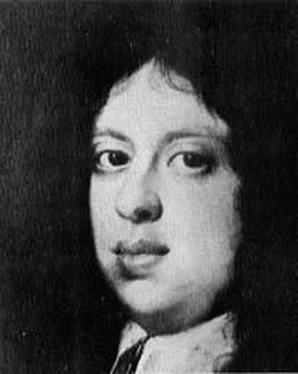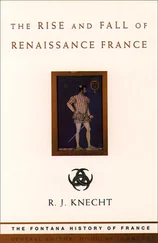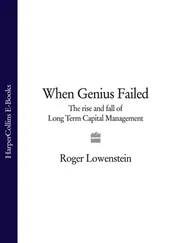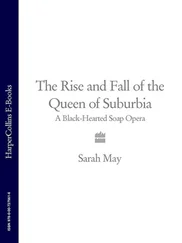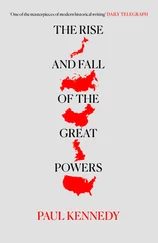In Rome the celebrations were more controlled, though the Sacro Possesso , the formal entry into the Vatican, was as splendid an occasion as the new Pope, who delighted in pageantry, could possibly have hoped for. It had to be admitted that Leo himself did not cut a very imposing figure. As he rode in the procession sitting side-saddle on a white Arab horse, it was noticed how his face, almost purple with the heat, ran with sweat despite the canopy of embroidered silk which was held over his head by eight Romans of distinguished birth. It was noticed, too, how corpulent he was, how vast his paunch, how fleshy his short neck, how fat the rolls beneath his chin, how bulging his weak eyes. Those whose duties brought them close to him were also distatesfully aware of the smell that now and again was emitted from the huge bottom on the saddle. Yet there was something endearing about the pleasure he so obviously took in the pageant; the nods of satisfaction he gave when his attendants read out to him the inscriptions on the triumphal columns which his own eyes did not enable him to see; the amiable expression with which he regarded the cheering onlookers to whom his chamberlains flung coins from their money-bags; the friendly smiles bestowed upon them when he gave them his papal benediction, raising the plump yet shapely white hands of which he was so proud though they were now encased in perfumed gloves sewn with pearls. His contentment was so transparent as to be infectious. The days of exile and poverty were over and he was about to enjoy the benefits of power and riches.’ God has given us the Papacy,’ he is reported to have said to his brother, Giuliano. ‘Let us enjoy it.’
Pope Leo’s determination to enjoy the Papacy did not, however, interfere with his equally determined ambition not only to make the House of Medici once more a dominating influence in Italian politics but also to drive the foreigner from Italian soil. To achieve the first of these aims he intended to form central Italy into a single strong state by uniting the duchies of Ferrara and Urbino, and by joining to them the cities of Parma, Modena and Piacenza. This new unified state was intended eventually to be placed under the rule of the Medici, perhaps under that of the Pope’s nephew, Lorenzo, Piero’s son, an ambitious, good-looking, energetic young man, who was now at the age of twenty sent to Florence as Leo’s representative in company with a secretary whose orders were to send daily reports to Rome upon his youthful master’s progress. At the same time, by diplomacy rather than by war, the Spaniards, who had helped the family to regain power in Florence, were to be driven out of Milan and the Kingdom of Naples. It might even be that the Kingdom of Naples would subsequently be given to Giuliano de’ Medici who, after his brother’s election as Pope, had been recalled from Florence to be created Gonfaloniere of the Church and who seemed prepared to embark on greater enterprises.
It appeared to the Pope a promising augury for his intended policies when on the first day of 1515 Louis XII died, exhausted by the demands and antics of his energetic young English bride, Princess Mary, daughter of Henry VII. Louis was succeeded by Francis I, a youth whom Leo had high hopes of bringing under his influence, particularly after a marriage was arranged between Francis’s aunt, Princess Philiberte of Savoy, a sister of the widowed Duchess of Orleans, and the Pope’s charming brother Giuliano.
The new French King, however, proved to be a far less pliable young man than the Pope had hoped. Tall, handsome and restless, Francis I was both intelligent and attractive, with a fixed determination to regain for France that influence in Italy which she had held for so short a time in the days of Charles VIII. Deeply perturbed by reports of Francis’s independence and of his ambitions in Italy, the Pope consulted his advisers, who in turn sought the advice of others, including Machiavelli. It was Machiavelli’s well-reasoned opinion that they should throw in their lot with the French; but the Pope hesitated to do so, and ultimately decided to ally himself with King Ferdinand of Spain, the Emperor and the Swiss.
Undeterred by this alliance, of which he professed himself contemptuous, King Francis crossed the Alps and marched down into Piedmont with an army of nearly 100,000 men. Hastily the allies assembled their forces, a motley collection of Spaniards under Cardona, Swiss mercenaries commanded by Matthew Schinner, the fierce Cardinal of Sion, and Florentines under the leadership of Lorenzo de’ Medici as Captain General and of Cardinal Giulio as Papal Legate. The Italians were not in the least anxious to fight; and after both Lorenzo and Giulio had entered into negotiations with Francis, his army brushed their troops aside and then defeated the Swiss with heavy loss of life at Marignano. Having disposed of his unworthy opponents, Francis despatched troops to occupy Milan and marched on to Bologna, where a conference was to be held with the Pope.
The Pope left for Bologna by way of Florence. Here his nephew, Lorenzo, had now consolidated the Medici power. A few months before, Lorenzo had paid a visit to Rome, leaving Florence in the hands of his uncles, Jacopo Salviati and Piero Ridolfi. In Rome he had been authorized to adopt the title of Captain General of the Florentine Republic which the Signoria had obediently bestowed upon him on his return. Thereafter he had become increasingly authoritarian, requiring councils to meet in the Medici Palace rather than in the public places of government, rejecting the advice of the more moderate and experienced citizens while surrounding himself with young dandies as subservient as courtiers.
A splendid reception for the Pope was prepared in Florence under the direction of Lorenzo and of Piero Ridolfi, who had been elected Gonfaloniere for the occasion. Two thousand men were put to work making decorations, obelisks, trophies and emblems, statues of classical gods and triumphal arches ornamented with classical quotations, at a total cost, so it was said, of 70,000 florins. Supervised by Jacopo Sansqvino, Baccio Bandinelli and Andrea del Sarto, churches were turned into workshops, and houses were demolished to open up fresh vistas. The Piazza Santa Trinita was overshadowed by a huge castle resting on twenty-two columns, and the Mercato Nuovo by a painted obelisk fifty feet high. The Cathedral was given a temporary facade which
made everybody marvel, with so many pictures and ornaments; and it was said that it was done as a model for the building of a permanent façade because it pleased everybody, so proud and lovely did it appear.
Indeed, such transformations were being effected in Florence that when the Pope arrived rather earlier than expected he was asked not to enter the city straight away but to wait for a few days at the Gianfigliazzi villa at Marignolle until the preparations had been completed. 2Never a man either to disappoint his admirers or to decline an invitation to play an honoured role in a pageant, Leo readily agreed to the suggestion and left for Marignolle to wait until the last triumphal arch had been erected, the final screen had been painted and decorated with allegorical figures, and the beautiful façade of wood and plaster, painted by Andrea del Sarto and designed by Jacopo Sansovino, had been placed against the Cathedral’s western front.
When all was ready, on St Andrew’s Day, 30 November 1515, the Pope, wearing a jewelled tiara and a dazzling cope, entered Florence through the Porta Romana accompanied by a huge train of attendants, men-at-arms and cardinals. At the sight of a bust of his father which had been erected on a screen by the church of San Felice and beneath which, through his spy-glass, he discerned the words, ‘This is my beloved Son’, the tears came to his eyes. He was also thinking, no doubt, of his sister Contessina who had recently died, a bereavement which gave her husband, the Gonfaloniere , an excuse to appear among the scarlet robes in a ‘black satin cloak lined with sable, not minding that in such an office and on such a day mourning should be suspended’. By the time he had proceeded down the Via Maggio, across the bridge of Santa Trinità and into the Piazza della Signoria, the Pope was smiling once more, raising his hands in benediction and nodding complacently as his attendants tossed silver coins towards the cheering crowds. Now and again he would halt the cavalcade to admire the decorations. In the Cathedral, where a raised platform had been erected in the nave so that the congregation could get a better view of him, he stood still in his white brocade rochet, crimson cape and skull cap, then turned from side to side before offering up his prayers.
Читать дальше
